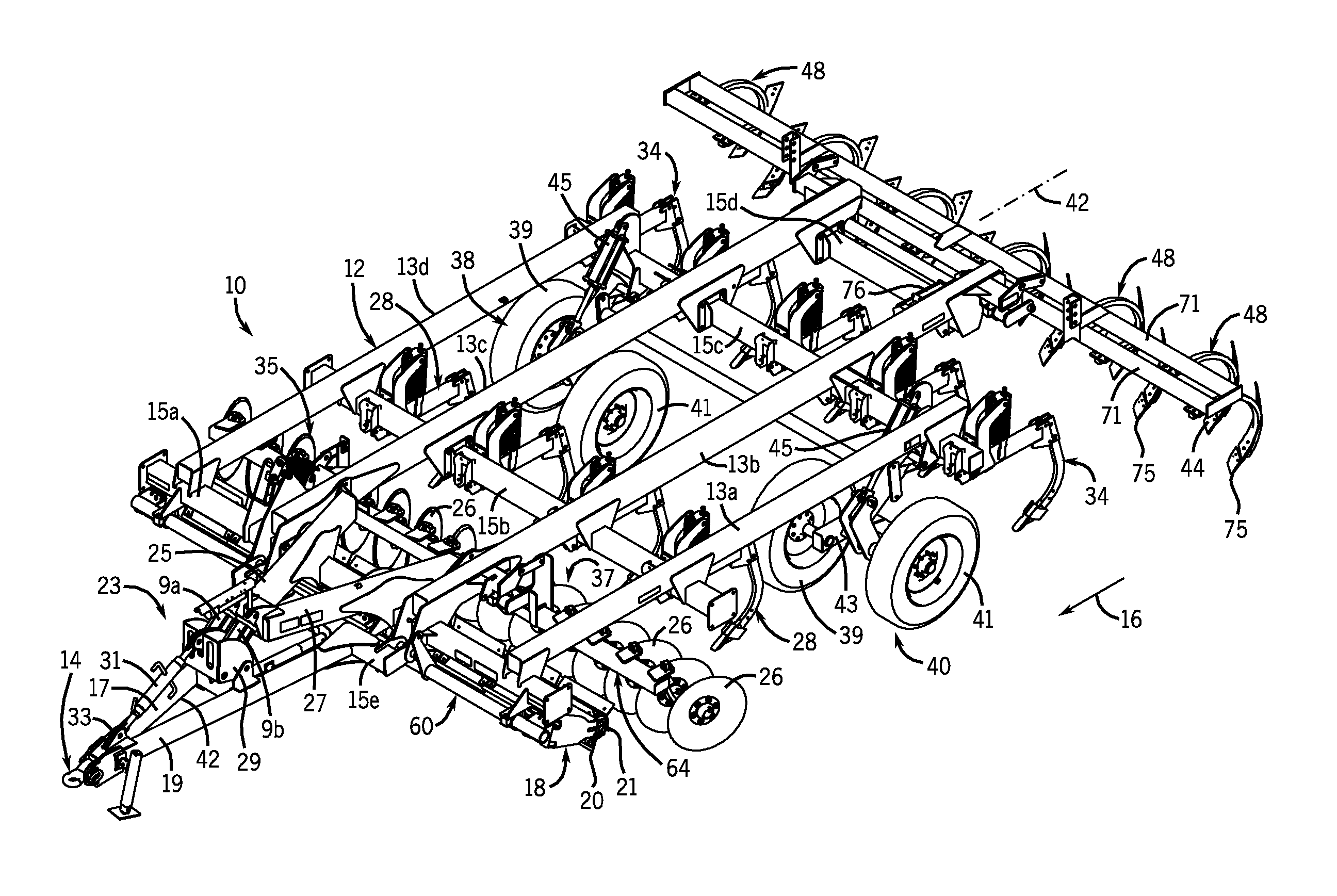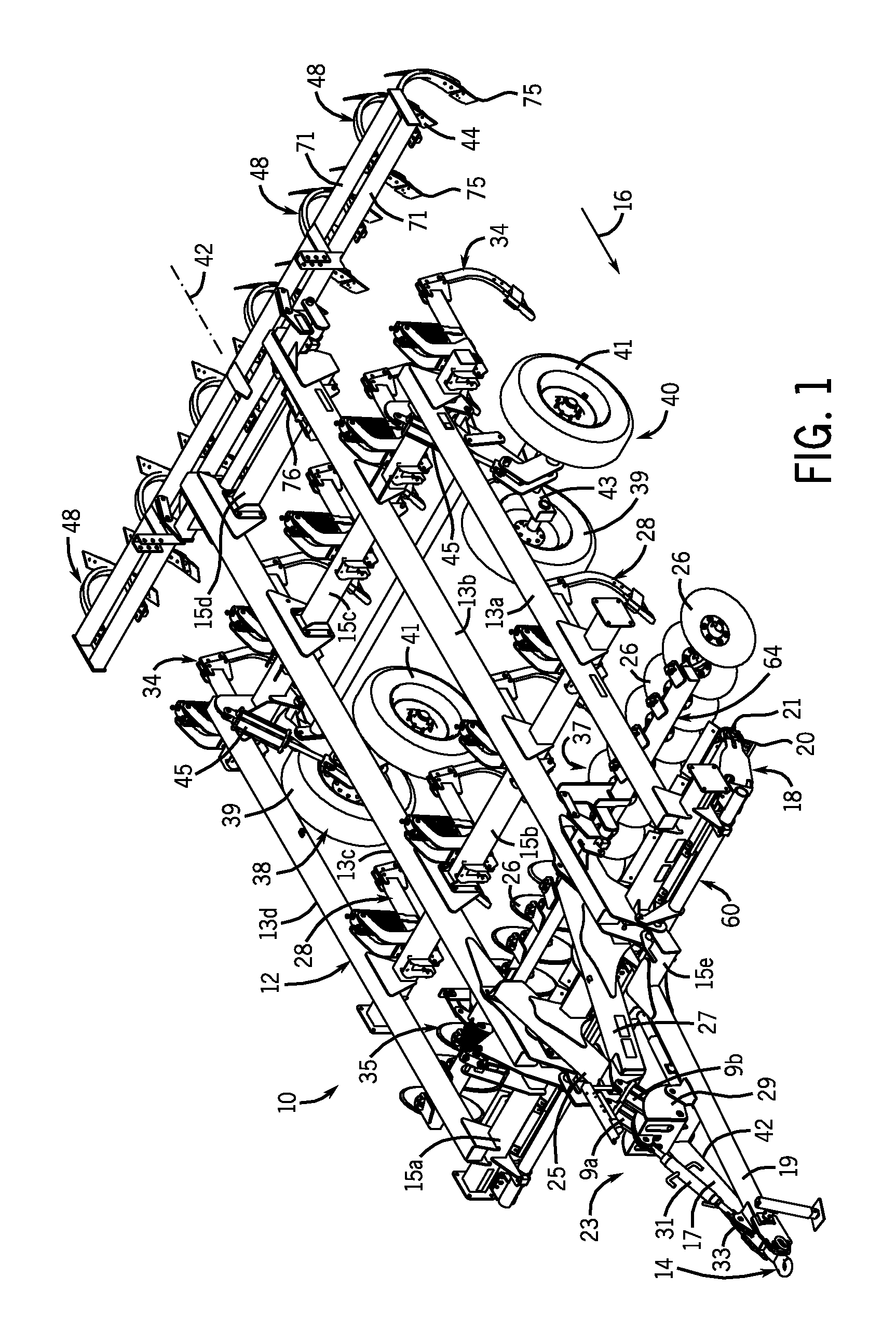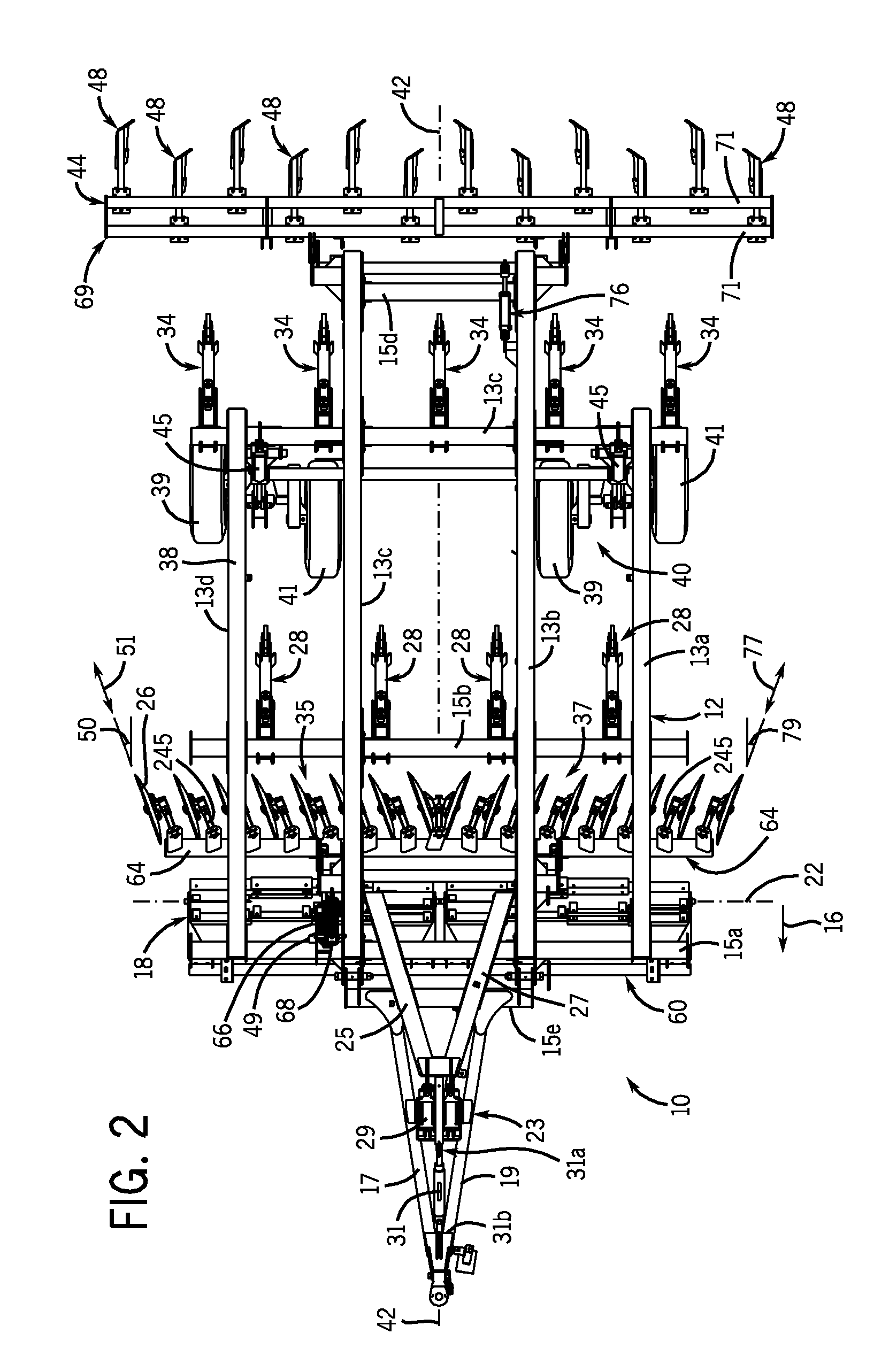Crop residue and soil conditioning agricultural implement
a technology of crop residue and agricultural implement, which is applied in the field of crop residue and soil conditioning agricultural implement, can solve the problems of inadequate soil conditioning of crop residue, affecting the efficiency of crop production, so as to reduce the amount of resources, reduce the effect of personnel, time and money resources, and efficient utilization of equipmen
- Summary
- Abstract
- Description
- Claims
- Application Information
AI Technical Summary
Benefits of technology
Problems solved by technology
Method used
Image
Examples
Embodiment Construction
[0027]Referring to FIGS. 1-3, a crop residue conditioning and incorporation implement, a primary tillage system, or a tillage device in accordance with the present invention is generally designated by the reference numeral 10. Tillage device 10 includes frame 12 extending along central axis 42 and has a first end incorporating hitch 14 that is adapted to operatively connect tillage device 10 with a drawbar of tow vehicle 128, FIG. 7.
[0028]Frame 12 includes a plurality of spaced longitudinally frame elements 13a-13d that are generally parallel to central axis 42 and that are interconnected by a plurality of cross frame members 15a-15c, transverse thereto. The rearward ends of frame elements 13b and 13c are interconnected by rear cross frame member 15d and the forward ends of frame elements 13b and 13c are interconnected by cross frame member 15e. As shown, hitch 14 is connected to forward cross frame member 15e by first and second hitch frame members 17 and 19, respectively. More spe...
PUM
 Login to View More
Login to View More Abstract
Description
Claims
Application Information
 Login to View More
Login to View More - R&D
- Intellectual Property
- Life Sciences
- Materials
- Tech Scout
- Unparalleled Data Quality
- Higher Quality Content
- 60% Fewer Hallucinations
Browse by: Latest US Patents, China's latest patents, Technical Efficacy Thesaurus, Application Domain, Technology Topic, Popular Technical Reports.
© 2025 PatSnap. All rights reserved.Legal|Privacy policy|Modern Slavery Act Transparency Statement|Sitemap|About US| Contact US: help@patsnap.com



